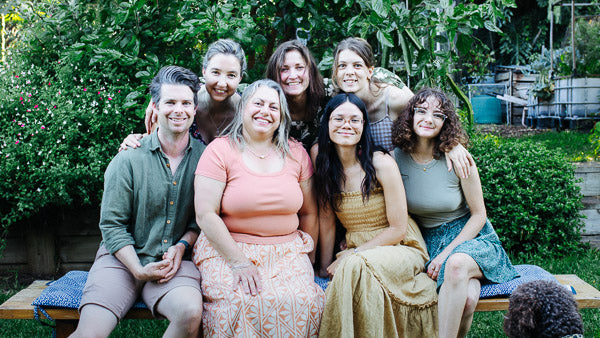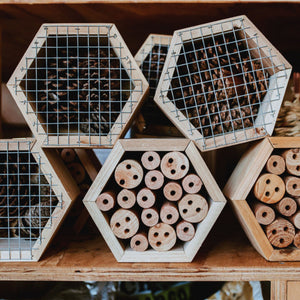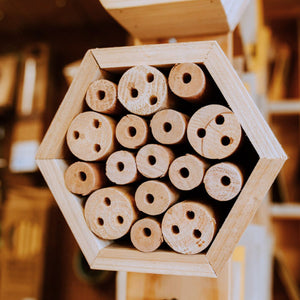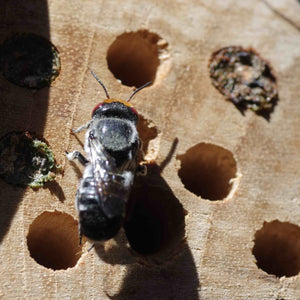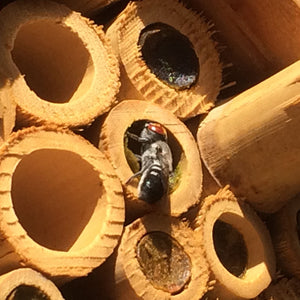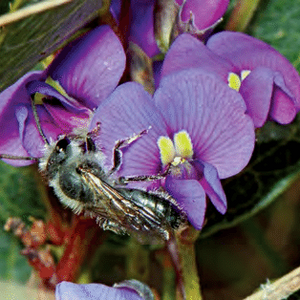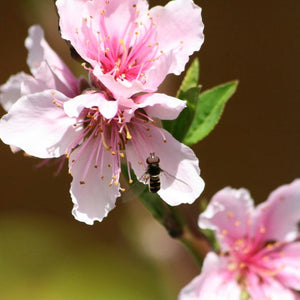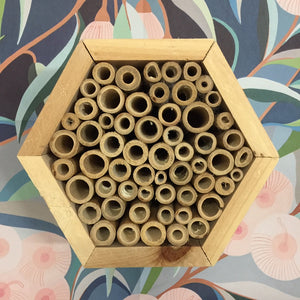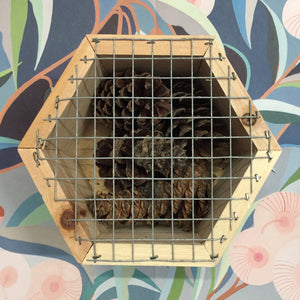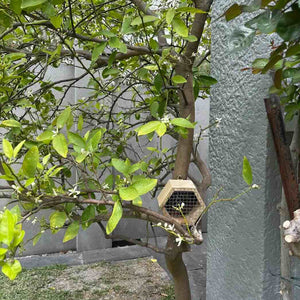3 Types of Wood Framed Hexagon Bee and Insect Hotels - Bamboo, Wooden Block, or Pinecone
Help attract beneficial insects to your garden or encourage those you already have to stick around by providing a sheltered resting and a nesting site for them with an Insect Hotel.
These attractive hexagonal shaped insect hotels, cater for a range of native bees and beneficial insects while allowing us to observe these insects and monitor their activity in our gardens.
Bamboo Bee Hotel
Bamboo insect hotels provide a nesting space for native bees to raise their offspring. Not all native bees will lay their eggs in a cavity that are naturally found in nature or in those we supply within insect hotels, as many make their nests in the ground.
The common names of the native bees we will mainly see nesting in insect hotels are masked, leaf-cutter and resin bees.
Bamboo is a great material to use in a bee hotel as it is hardy with varying diameters which caters to the large range of native bee body sizes.
Wooden Block Bee Hotel
Each piece of wood in the wooden block insect hotel has been drilled with 1 to 3 holes that are 5mm in diameter.
This is a great cavity size for smaller sized body native bees, wasps and other egg laying insects.
Pinecone Insect Hotel
Help attract ladybirds to your garden or encourage those you already have to stick aroundby providing a sheltered resting and nesting site for them with a Hexagonal Insect Hotel.
Ladybirds are always looking for a safe space to lay their eggs and somewhere to hibernate over winter. They often use dead stems or old wood, but you can replicate this natural environment in your garden with a pinecone insect hotel. Plant flowers and herbs around your hotel such as cilantro, dill, fennel, caraway, yarrow, tansy, angelica, scented geraniums, coreopsis and cosmos so that they have a reliable food source.
Ladybirds are also well loved by gardeners as they are voracious aphid eaters, and so are their larvae. Ladybirds are so good at keeping population numbers down, you won't need to use pesticides.
How can I tell I have native bee guests in my insect hotel?
You can tell that native bees have nested and laid eggs in your hotel as most will make a door across the cavity to cover the entrance made from materials such as mud, resin, leaves, petals, or secretions depending on the bee. Once hatched the larvae eat the nectar and pollen collected and stored in the cavity by the female bee.
Where do I place my insect hotel?
In placing your Insect Hotel in the garden it's important to position in sunny aspects but not in a place where it will get excessively hot. The hotel should be at least one metre off the ground and placed in a sheltered area where it will not be disturbed.
How do I set up my insect hotel?
For detailed information on insect hotel placement, water and food requirements see ourNative Bees ‚ Most Welcome Visitors to the GardenandGrowing a Bee Friendly Gardenarticles. Although this information is centred on native bees it is applicable to all beneficial garden insects and their needs.
Dimensions
150x170x85mm (WxHxD)

